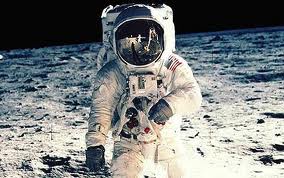
The BBC also says that this company “plans to use existing rockets to reach the lunar surface“.
My thoughts? Well, it sounds cool, but it reeks of fund-raising and PR hype, they might indeed truly have the ambition, but I cannot see them ever making the trip, commercial reality will dictate that outcome. Governments, can and do burn $$$ for non-commercial reasons, but companies either generate income or they die. So how many individuals do they plan to take to the moon per trip, and would the income from such journeys truly cover the cost and generate a profit? It is this point that I have serious doubts about.
The Washington Post has deeper details, is there anything there that changes my initial thoughts above? Lets see ..
Led by heavy-hitter former NASA executives, the Golden Spike Co. would boldly go where humankind went 40 years ago, this time commercially, hawking tickets to foreign governments or space tourists
Ha, so they players in the mix do inspire a bit more confidence, ex-NASA execs, the folks who have contacts and experience. As for buyers, yes other nations could indeed consider it, but I suspect the political push-back on wasting billions instead of investing would guarantee that any elected government would promptly get the boot.
As an aside, I’m sure you get the reference, the company name. “Golden Spike” is of course a hat-tip to the ceremonial final spike driven by Leland Stanford to join the rails of the First Transcontinental Railroad across the United States connecting the Central Pacific and Union Pacific railroads on May 10, 1869. With that name itself you get a glimpse of their thinking here.
“We realize this is the stuff of science fiction. We intend to make it science fact,” Stern said at the news conference. He added: “We believe in the price points that we’re talking about.”
The company has assembled some credible advisers, with a board chaired by former NASA Johnson Space Center director Gerry Griffin. The business model requires economies of scale — lots of customers and lots of missions to the moon to offset the very high start-up cost. The company sees 2020 as a plausible date for that initial trip.
And there is the problem … not only is it science fiction, but the assumption is “lots of customers and lots of missions” … that is something I cannot see happening.
What do NASA think? Their comment apparently runs along the lines of “Go for it and best of luck”.
When challenged that the cost of their first mission would be $7 billion (their own numbers apparently), and asked how could this ever be commercial, they responded, “One should not overlook the “media stream. The missions could be televised, with corporate sponsorship, advertising, naming rights and so on.” In other words …
“one small step for man, one giant leap for Bud Light”
It’s a vision, a dream, but will not become a reality, the cost and effort involved in the use of chemical propulsion to get out of our gravity well, on to the moon and then back is beyond our means. We need a better more economical means for doing this. Perhaps I’m wrong about this, I often am, perhaps this will motivate somebody to bubble to the surface with a cool way to make all this viable, what do you think?